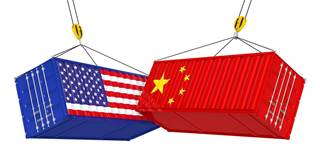The May 19 deal between the US and China seems to have reduced tensions between the two countries. But, given the global nature of America's trade deficit, any effort to impose a solution focusing on one country will likely backfire.
NEW HAVEN – The good news is that the United States and China appear to have backed away from the precipice of a trade war. While vague in detail, a May 19 agreement defuses tension and commits to further negotiation. The bad news is that the framework of negotiations is flawed: A deal with any one country will do little to resolve America’s fundamental economic imbalances that have arisen in an interconnected world.
There is a longstanding disconnect between bilateral and multilateral approaches to international economic problems. In May 1930, some 1,028 of America’s leading academic economists wrote a public letter to US President Herbert Hoover urging him to veto the pending Smoot-Hawley tariff bill. Hoover ignored the advice, and the global trade war that followed made a garden-variety depression “great.” President Donald Trump has put a comparable spin on what it takes to “make America great again.”
Politicians have long favored the bilateral perspective, because it simplifies blame: you “solve” problems by targeting a specific country. By contrast, the multilateral approach appeals to most economists, because it stresses the balance-of-payments distortions that arise from mismatches between saving and investment. This contrast between the simple and the complex is an obvious and important reason why economists often lose public debates. The dismal science has never been known for clarity.

NEW HAVEN – The good news is that the United States and China appear to have backed away from the precipice of a trade war. While vague in detail, a May 19 agreement defuses tension and commits to further negotiation. The bad news is that the framework of negotiations is flawed: A deal with any one country will do little to resolve America’s fundamental economic imbalances that have arisen in an interconnected world.
There is a longstanding disconnect between bilateral and multilateral approaches to international economic problems. In May 1930, some 1,028 of America’s leading academic economists wrote a public letter to US President Herbert Hoover urging him to veto the pending Smoot-Hawley tariff bill. Hoover ignored the advice, and the global trade war that followed made a garden-variety depression “great.” President Donald Trump has put a comparable spin on what it takes to “make America great again.”
Politicians have long favored the bilateral perspective, because it simplifies blame: you “solve” problems by targeting a specific country. By contrast, the multilateral approach appeals to most economists, because it stresses the balance-of-payments distortions that arise from mismatches between saving and investment. This contrast between the simple and the complex is an obvious and important reason why economists often lose public debates. The dismal science has never been known for clarity.